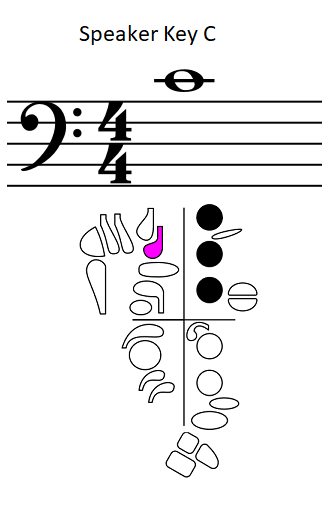
The upper C on most bassoons works best with the high C speaker key. As with the other speaker key notes, the fingering is almost the same as C the octave below. The left thumb is the only finger that changes between octaves, it is on the whisper key in the staff and on the high C speaker key above the staff.
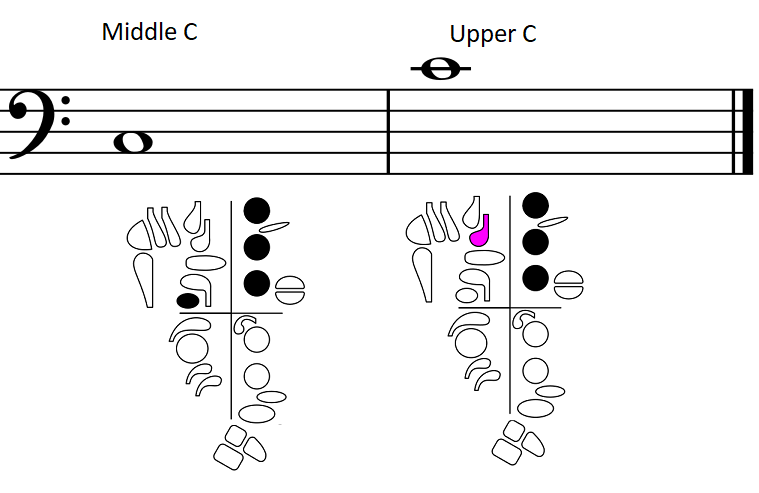
Matching Pitch
Play through Matching Pitch on C to determine which speaker key sounds best on your instrument. Play with fast air and your best breath support for the best intonation and tone.

This upper octave C tends to be a flat note on the bassoon, so you’ll need to:
- Listen carefully to the drone to create an accurate aural target, AND
- Use optimum breath support, AND
- Blow fast, cold air, AND
- Raise the back of your tongue to form an “ee” vowel.
- Press the high C speaker key.
- Increase support at the center of your bottom lip.
If you are sharp, rely more on your breath support and air speed to create the note AND
- Open your oral cavity and lower the back of your tongue
- Increase the space between your teeth and decrease pressure on the reed.
Speaker Key Exercise on C
Practice timing the thumb motion between the whisper key and high C speaker key with the next exercise.
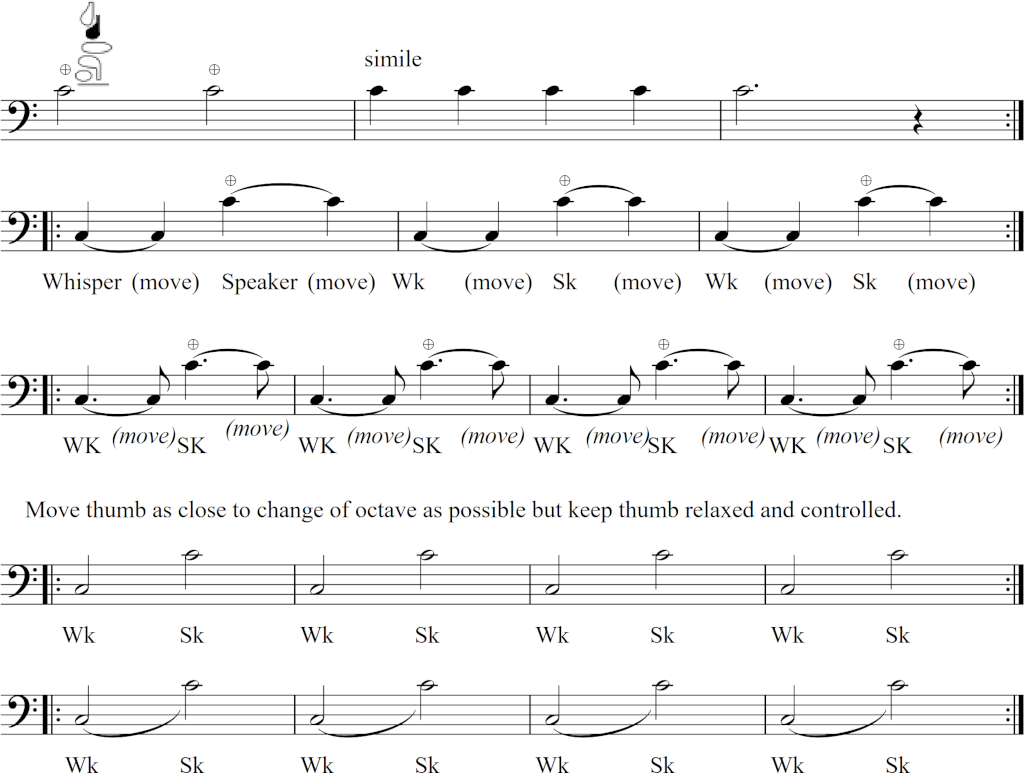
C major scale in half notes
The fingerings for this scale are pretty easy so focus on the following areas:
- Accuracy and ease of your left thumb,
- Air speed increases as you go up and decreases as you come back down,
- Keeping the tone full and the articulation clear.


French Folk Song
French Folk Song needs to have a singing quality so use a light articulation in addition to your usual best breath support. Singing the tune in your head as you play will help intonation and tone.
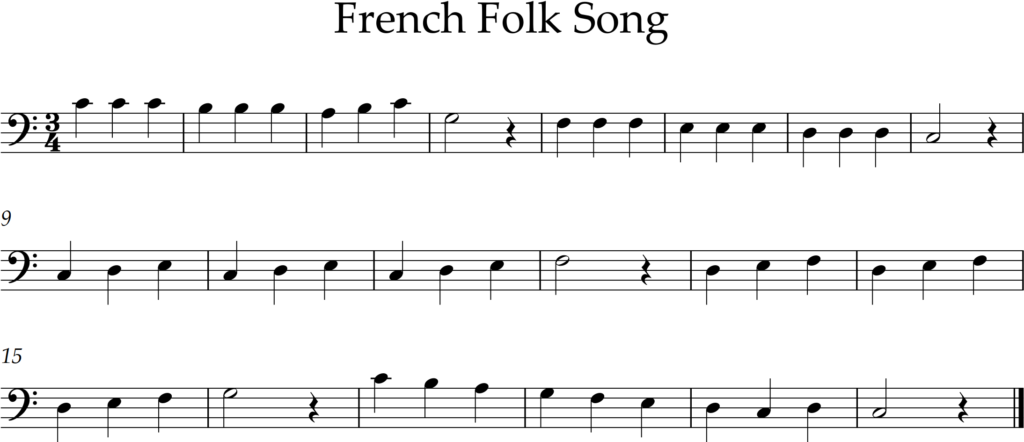
Melody in the Second Octave
Melody in the Second Octave includes leaps from half-hole notes to speaker key notes. Remember that the E hole needs to be covered completely for the speaker key notes. The only half-hole note in the tune is the top-space G. Look through the music and find the half-hole Gs and identify the speaker key notes and practice those intervals before playing the entire tune.
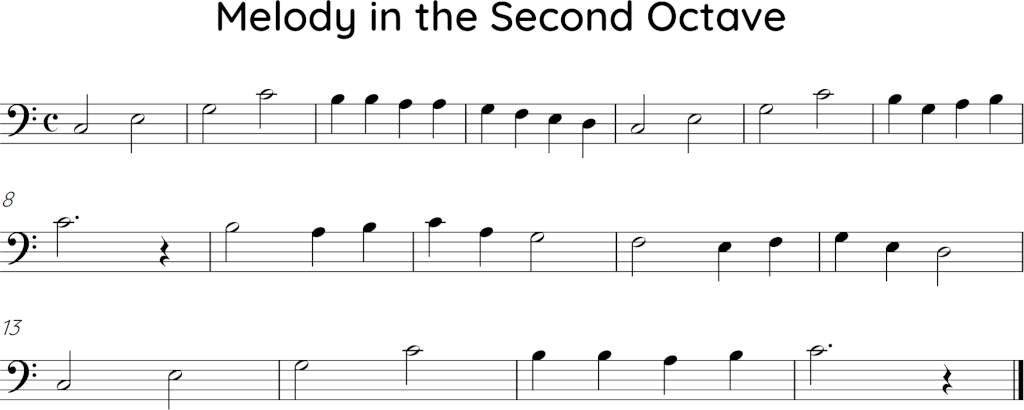
Melody in the Second Octave with reminders
____________ = use the whisper key and slower air
____________ = use faster air and speaker key (high A or C)
+RES = add the resonance key (left pinky top key)
note circled in green = half-hole
note in a purple box and ‘EE’ = raise back of tongue to ‘EE’ vowel
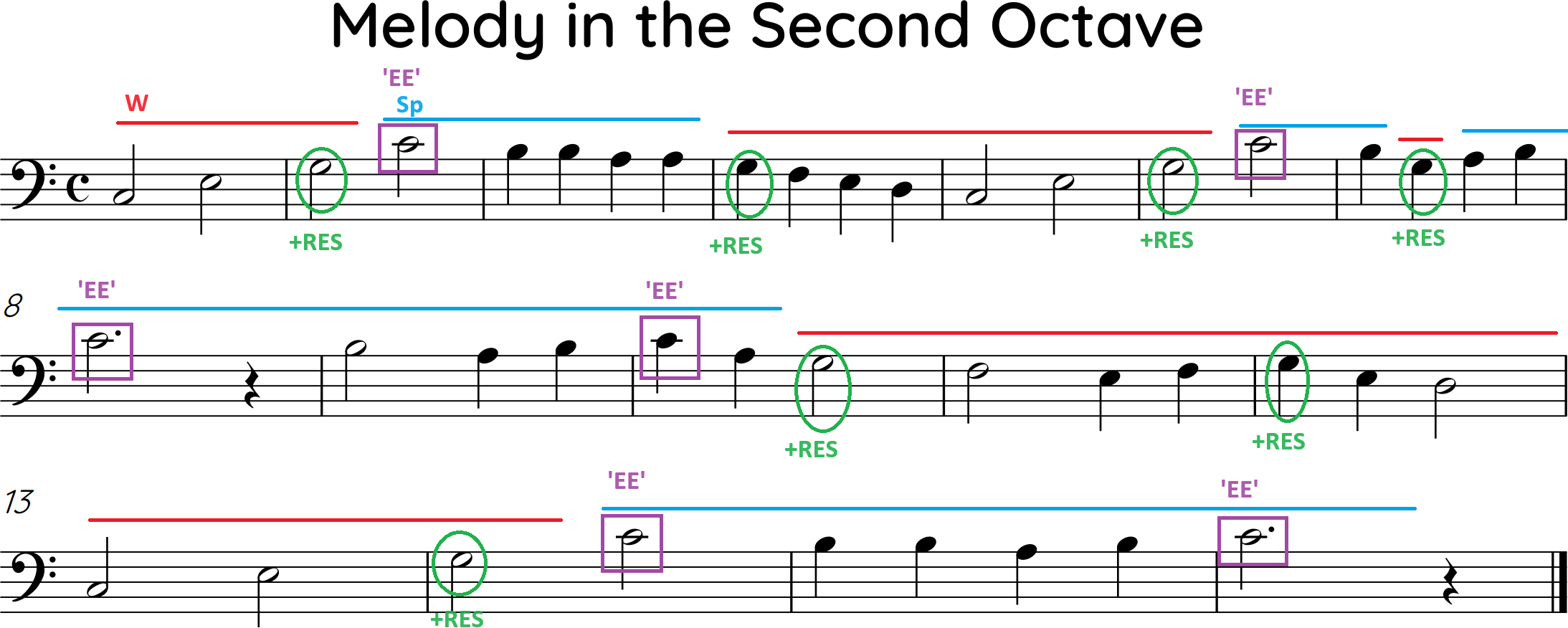
Ode to Joy
Here’s another tune for half-hole and speaker key practice.
Remember:
- Use the whisper key on half-hole notes.
- Cover the top hole completely on speaker key notes.
- Use fast air at the top of the staff.
- Use “ee” vowel at top of staff.
- Isolate and repeat the difficult intervals. Use a variety of rhythms and articulations.
- Playing in this register can be tiring so plan regular practice instead of trying to learn all of this in one day.
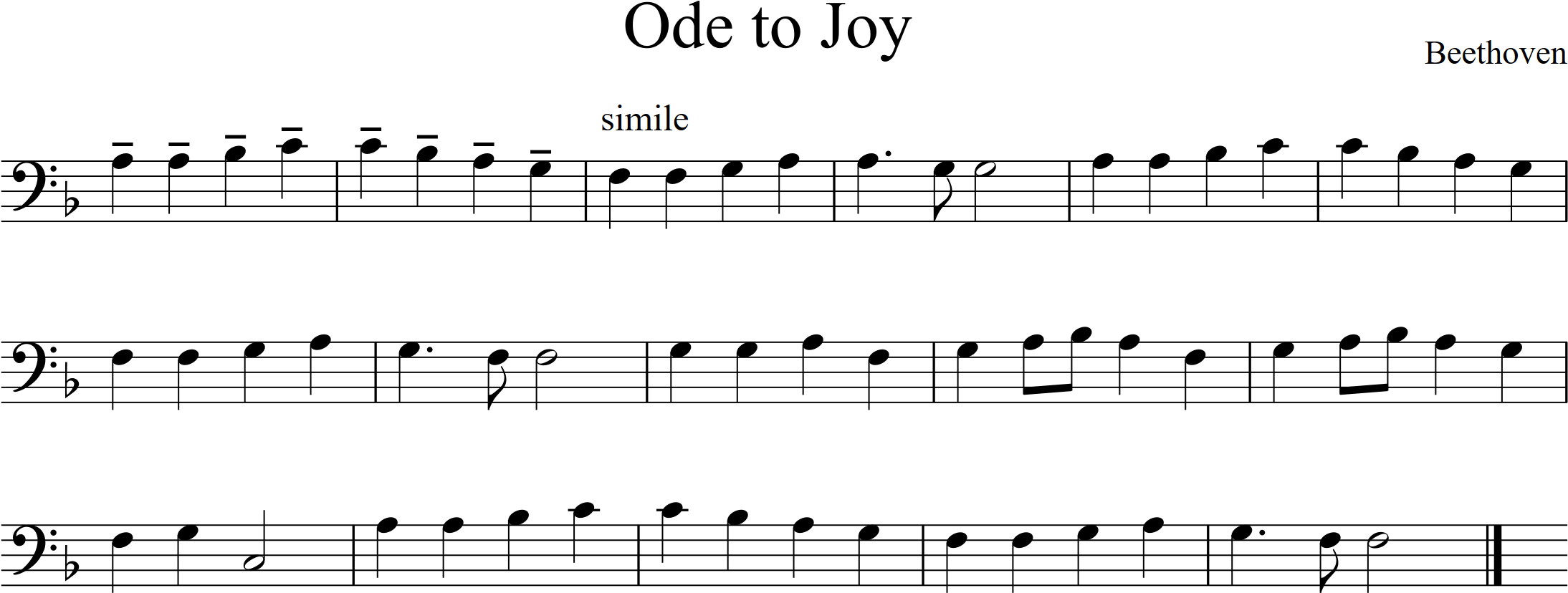
Ode to Joy with reminders
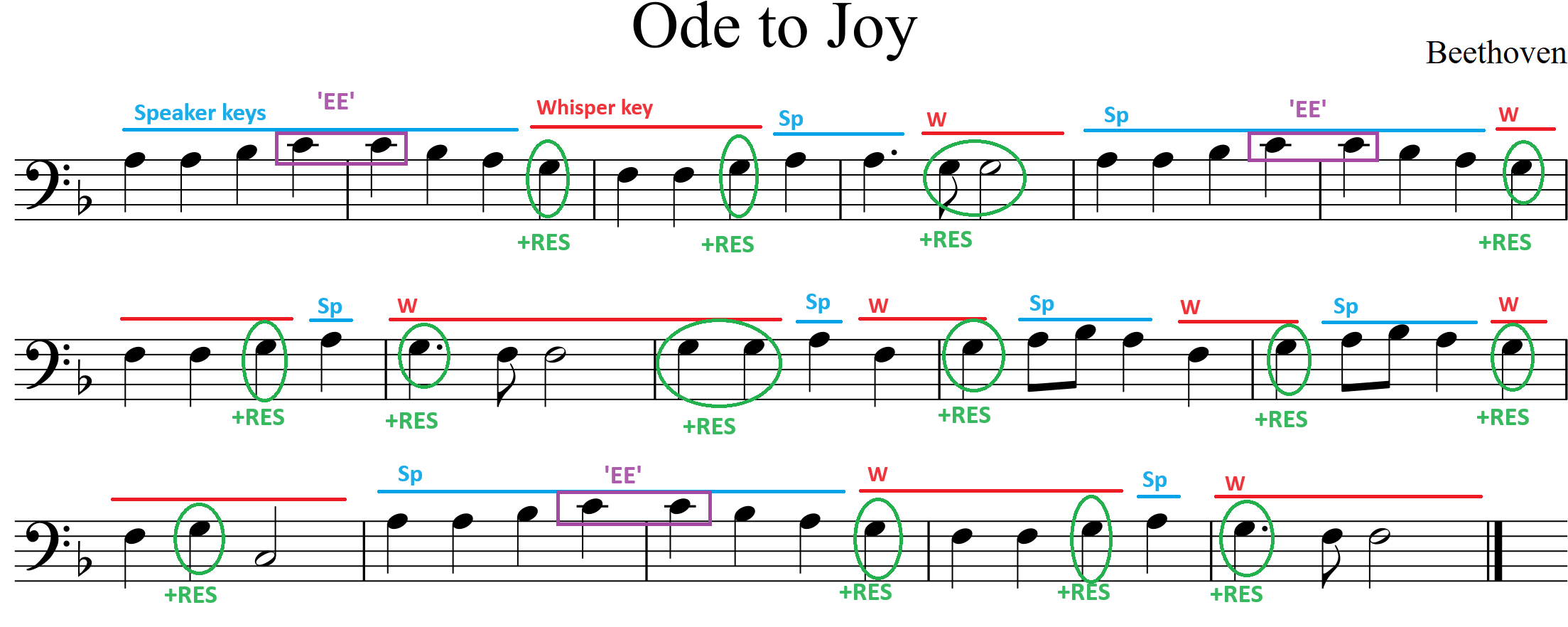
The Merry Peasant and Song
The Merry Peasant by Robert Schumann and Song by Philip Rosseter (Faber Music, First Book of Bassoon Solos, arr. L. Hilling & W. Bermann)
NYSSMA Level 2 (must play both movements)
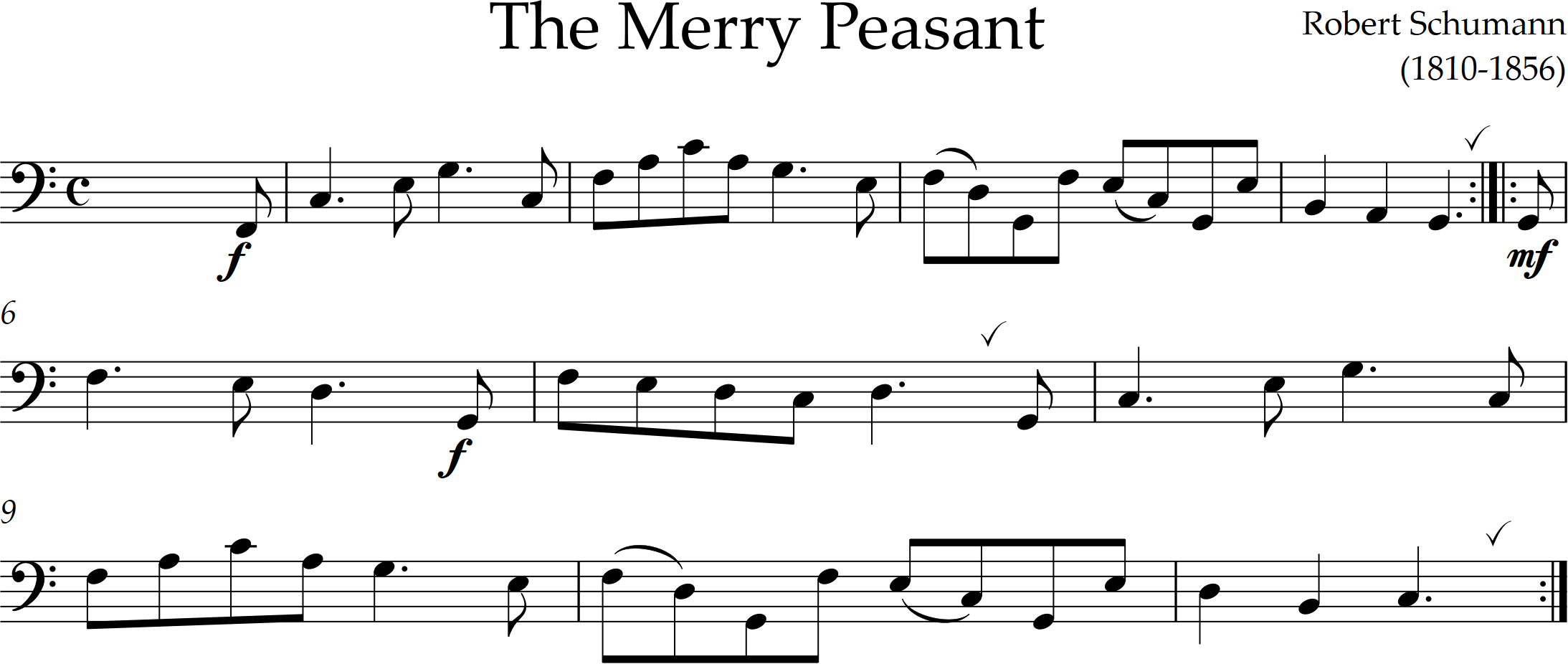
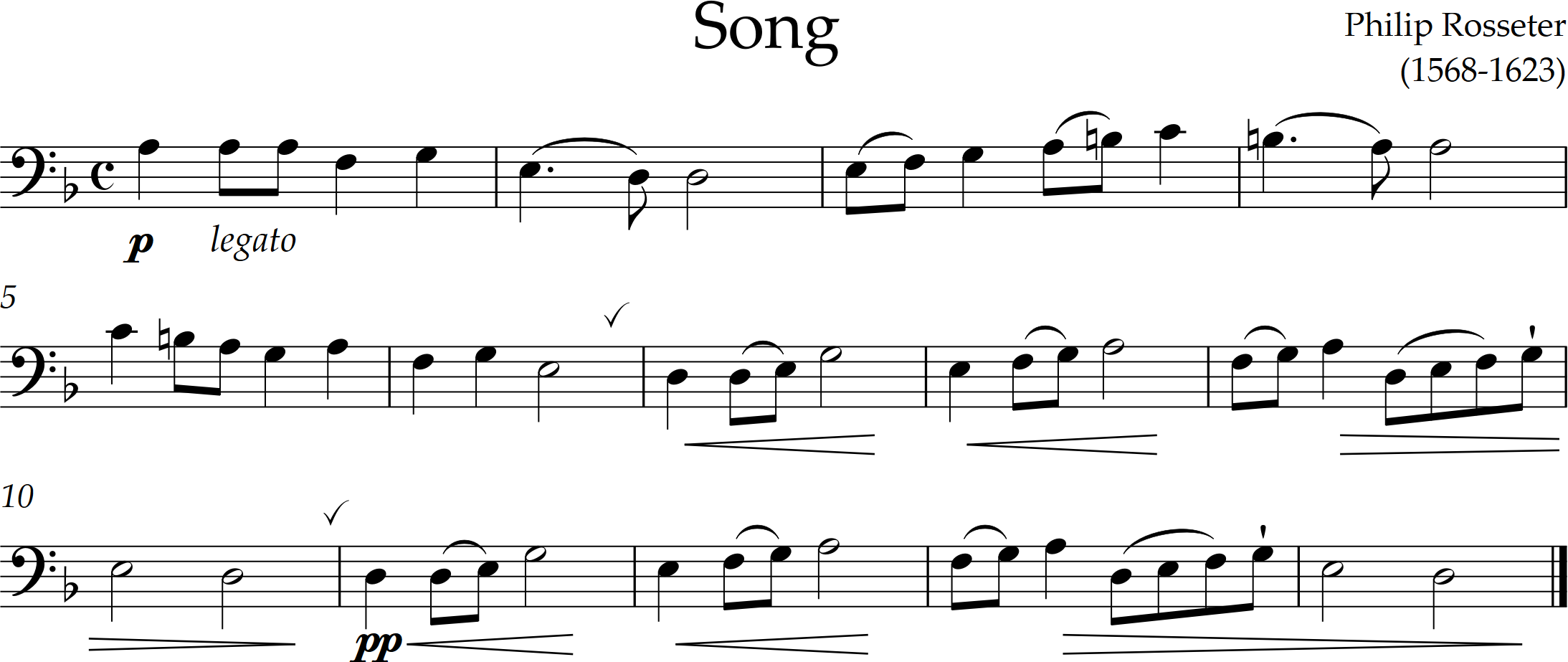


Feedback/Errata